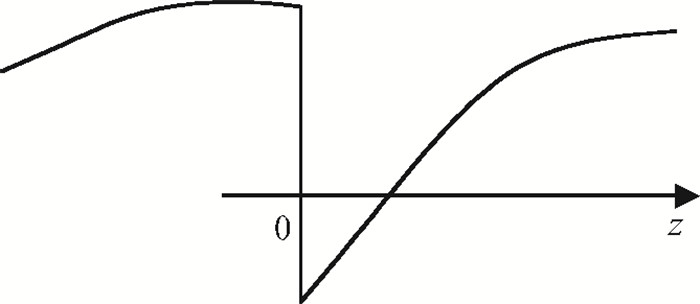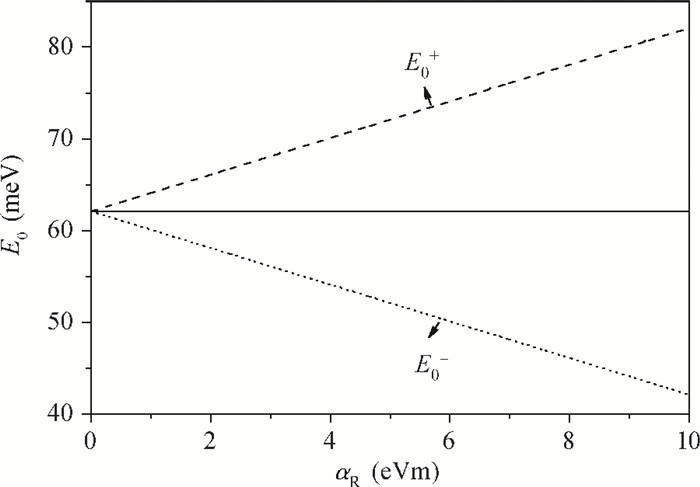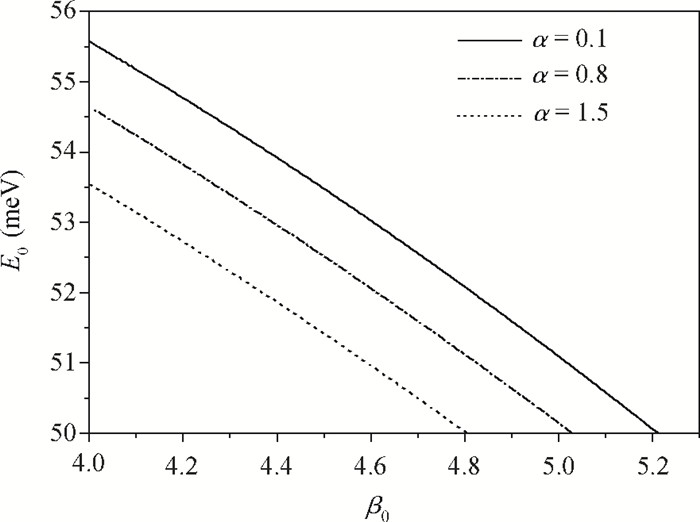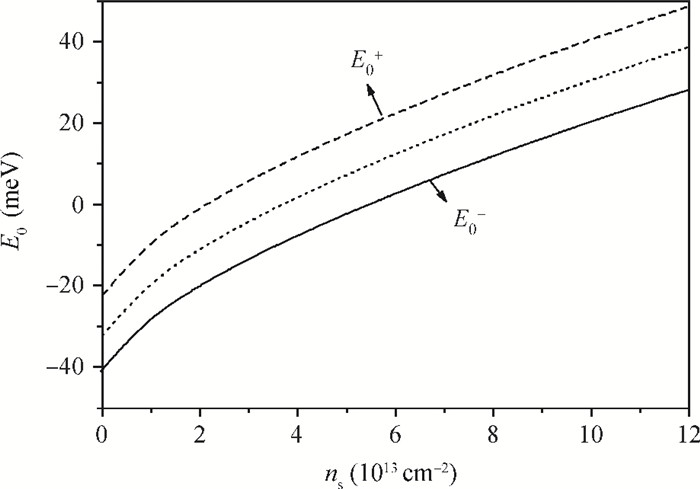| Citation: |
Hairui Zhang, Yong Sun. Properties of polaron in a triangular quantum well induced by the Rashba effect[J]. Journal of Semiconductors, 2014, 35(10): 102001. doi: 10.1088/1674-4926/35/10/102001
****
H R Zhang, Y Sun. Properties of polaron in a triangular quantum well induced by the Rashba effect[J]. J. Semicond., 2014, 35(10): 102001. doi: 10.1088/1674-4926/35/10/102001.
|
Properties of polaron in a triangular quantum well induced by the Rashba effect
DOI: 10.1088/1674-4926/35/10/102001
More Information
-
Abstract
The properties of the weakly-coupling bound polaron, considering an influence of Rashba effect, which is brought about by the spin-orbit (SO) interaction, in an semiconductor triangular quantum well (TQW), have been studied by using the linear combination operator and the unitary transformation methods. We obtain an expression for the ground state energy of the weak-coupling and bound polaron in a TQW as a function of the coupling constant, Coulomb bound potential, and the electron areal density. Our numerical results show that the ground state energy of the polaron is composed of four parts, one part is caused by the electrons' own energy, the second part is caused by the Rashba effect, the third part occurs because of the Coulomb bound potential, and the last term is induced by the interaction between the electrons and LO phonons. The interactions between the orbit and the spin with different directions have different effects on the ground state energy of the polaron. -
References
[1] Culcer D, Sinova N A, Sinitsyn N A, et al. Semiclassical spin transport in spin-orbit-coupled bands. Phys Rev Lett, 2004, 93:046602 doi: 10.1103/PhysRevLett.93.046602[2] Rokhinson L P, Larkina V, Lyanda-Geller Y B, et al. Spin separation in cyclotron motion. Phys Rev Lett, 2004, 93:146601 doi: 10.1103/PhysRevLett.93.146601[3] Hu L B, Gao J, Shun Q S. Influence of spin transfer and contact resistance on measurement of the spin Hall effect. Phys Rev B, 2003, 68:115302 doi: 10.1103/PhysRevB.68.115302[4] Wolf S A, Awschalom D D, Buhrman R A, et al. Spintronics:a spin-based electronics vision for the future. Science, 2001, 294:14488 http://science.sciencemag.org/content/294/5546/1488[5] Yang M, Li S S. Device for change and spin-pumped current generation with temperature-induced enhancement. Phys Rev B, 2004, 70:195341 doi: 10.1103/PhysRevB.70.195341[6] Goiub L E, Ivchenko E L. Spin splitting in symmetrical SiGe quantum wells. Phys Rev B, 2004, 69:115333 doi: 10.1103/PhysRevB.69.115333[7] Liu Jia, Xiao Jinglin. Zero-magnetic-field spin splitting of polaron's ground state energy induced by Rashba spin-orbit interaction. Commun Theor Phys, 2006, 46:761 doi: 10.1088/0253-6102/46/4/039[8] Junsaku N, Tatsushi A, Hideaki T. Gate control of spin-orbit interaction in an inverted In0.53Ga0.47As/In0.52A10.48As heterostructure. Phys Rev Lett, 1997, 78:1335 doi: 10.1103/PhysRevLett.78.1335[9] Chen Weili, Xiao Jinglin. Magnetic field effect on the property of the weak-coupling bound polaron in quantum well. Chinese Journal of Luminescence, 2007, 28:143[10] Pödör B. Variational calculation for triangular quantum wells using modified trial wave function. Acta Physica Polonica A, 1995, 88:869 doi: 10.12693/APhysPolA.88.869[11] Kartheuser E. Polaron in ionic crystal and polar semiconductor. North-Holland:Amsterdam, 1972 -
Proportional views






 DownLoad:
DownLoad:

















